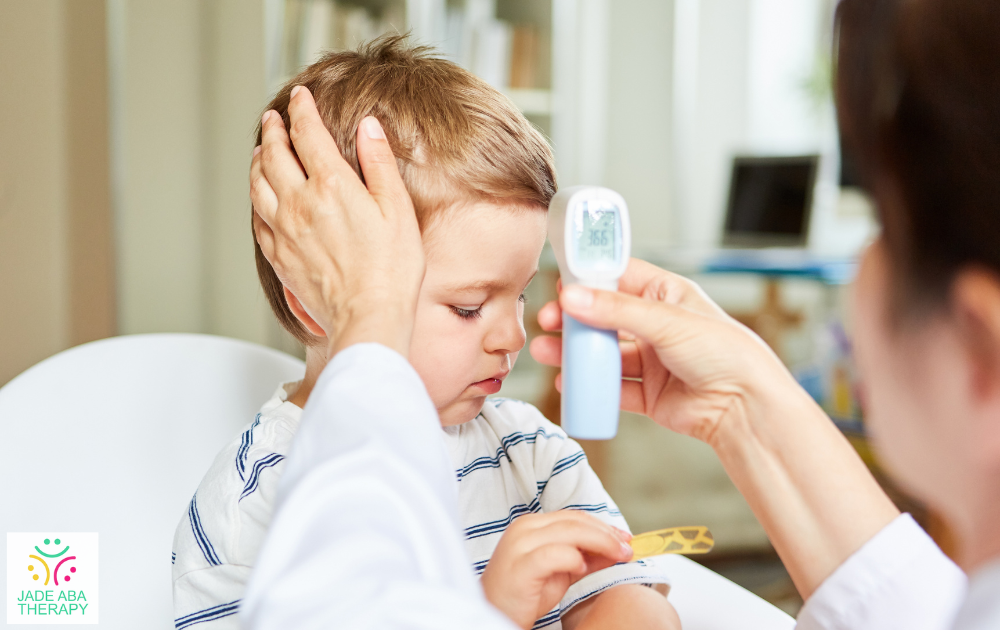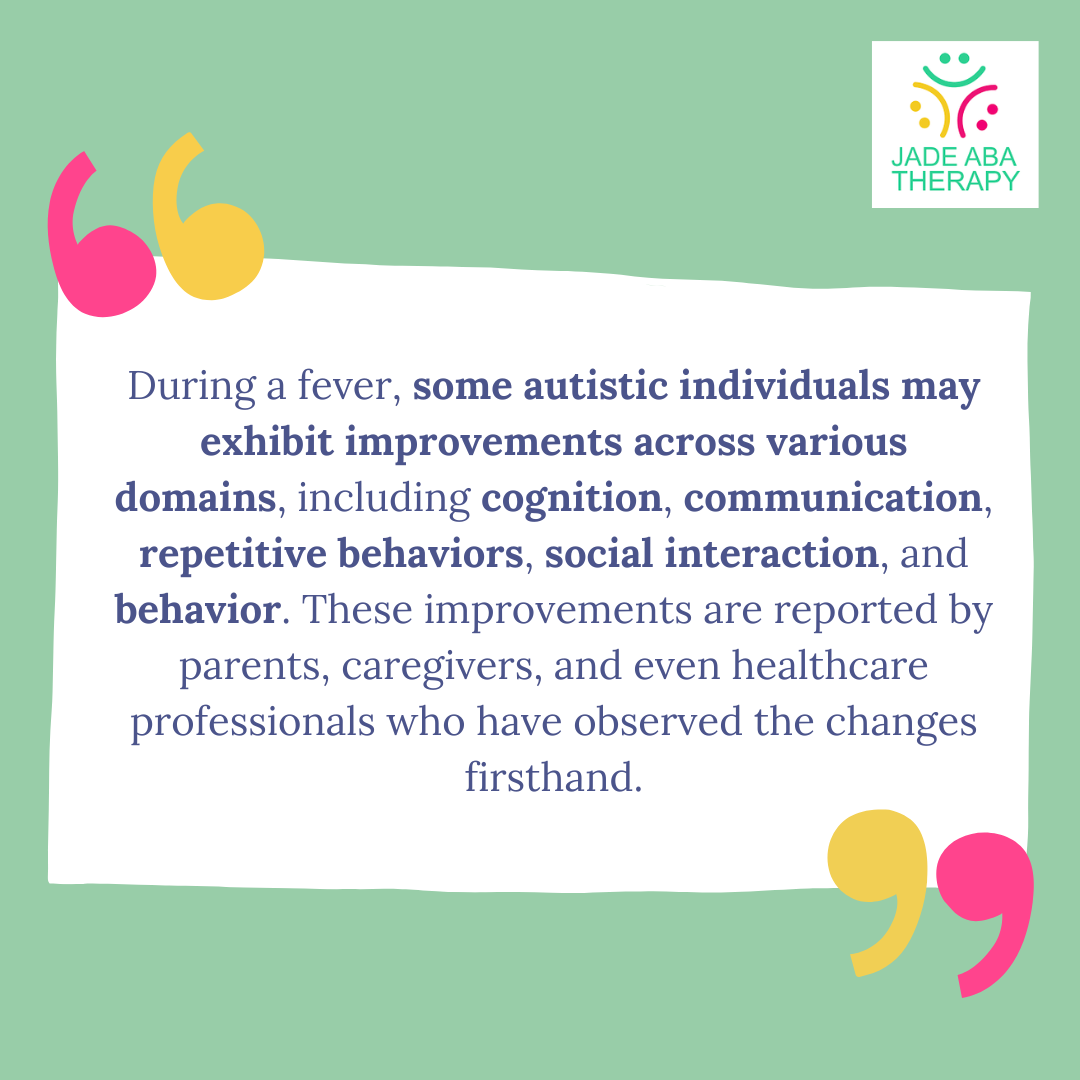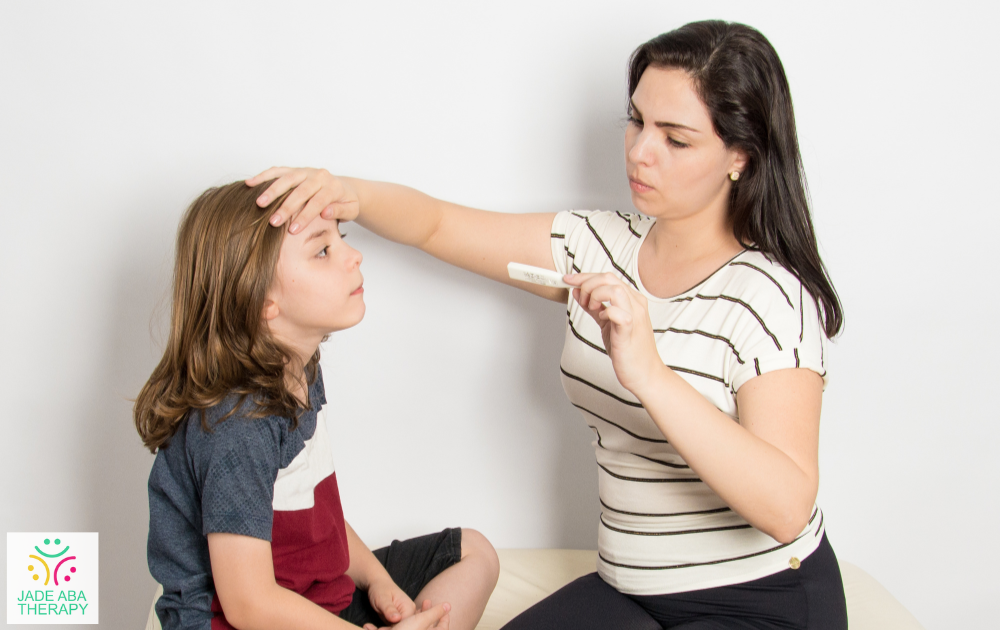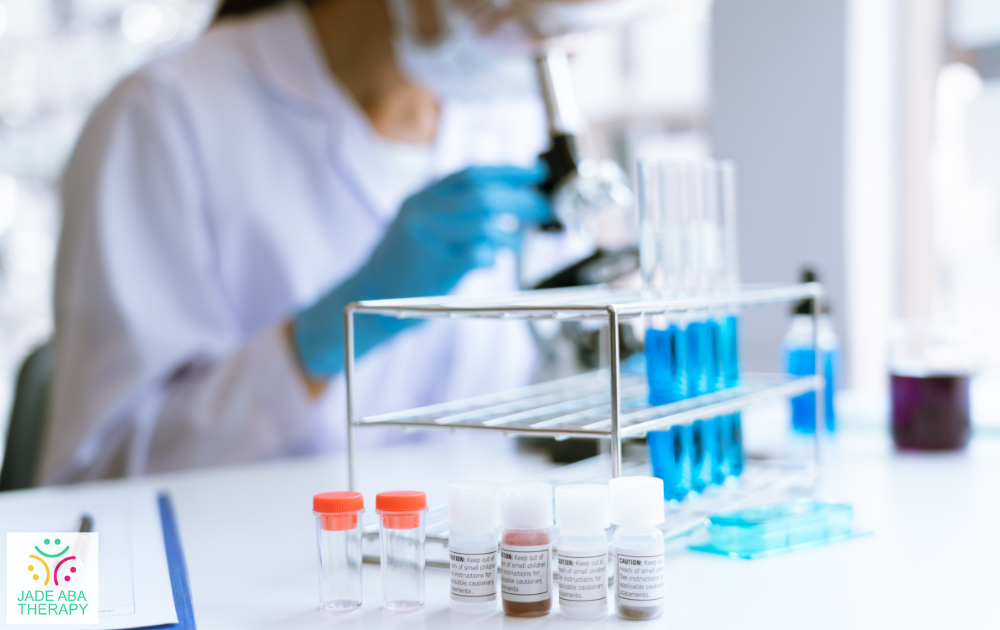The fever effect in autism refers to the observation that some individuals with autism experience temporary improvements in their symptoms when they have a fever. This phenomenon has been noted by parents, caregivers, and medical professionals alike, and has generated interest in understanding its underlying mechanisms and potential implications.
Here, we’re going to take a look at what the autism fever effect actually means and more.

What is the Fever Effect?
The fever effect in autism was first observed in 1980 during an outbreak of a viral infection in a therapeutic nursery for children with autism at Bellevue Psychiatric Hospital in New York. Staff members reported that the children exhibited increased sociability, alertness, and communication skills while they had a fever.
These improvements in behavior and functioning were observed to fade once the fever subsided.
Research studies have further explored the fever effect in autism. In a 2017 study involving 2,152 autistic children, approximately 17% of participants experienced improvements in various areas, including communication, behaviors, and social interaction, during a fever. These improvements were typically temporary and reverted once the fever resolved.
However, it is important to note that not all individuals with autism experience the fever effect. A more recent study conducted in 2022 found that only three out of 141 autistic participants reported a reduction in their symptoms during a fever.
This suggests that fevers may have the opposite effect on some individuals with autism compared to the positive impact reported by some parents and health experts.

Benefits and Limitations of the Fever Effect
The fever effect can have significant implications for individuals with autism and their families. Temporary improvements in symptoms during a fever can provide a glimpse into the potential for enhanced communication, reduced repetitive behaviors, and improved social interaction.
However, it is crucial to understand that the fever effect is not a sustainable or recommended treatment approach. Relying on fever-induced improvements as a long-term strategy for managing autism symptoms is not practical or safe.
Fevers can be uncomfortable and potentially harmful, and it is essential to prioritize the well-being and health of individuals with autism.
Further research is needed to fully understand the mechanisms behind the fever effect in autism and to explore any potential therapeutic applications. By gaining a deeper understanding of this phenomenon, researchers and healthcare professionals can develop targeted treatment options and recommendations that focus on long-term strategies to support individuals with autism.
The fever effect in autism remains an intriguing area of study, and continued research efforts will help shed light on this phenomenon and its potential implications for individuals on the autism spectrum.
Impact of Fever on Autism Symptoms
Research has shown that as much as 83.33% of individuals with autism experience the fever effect.

The specific improvements experienced during a fever can vary from person to person. Some individuals may become more social, alert, and talkative, while others may show advancements in their communication skills or a reduction in repetitive behaviors.
However, it’s important to note that these improvements are temporary and tend to fade as the fever subsides.
There are various factors that can influence the occurrence and intensity of the fever effect in individuals with autism. Research studies have found that the fever effect is more likely to occur in children with significantly lower non-verbal cognitive skills, language levels, and more repetitive behaviors. These factors suggest that the fever effect may be more pronounced in individuals with more severe autism symptoms.
Additionally, the presence of co-occurring conditions or specific genetic variations may also play a role in the fever effect. Further research is needed to better understand these factors and their impact on the fever effect in individuals with autism.

Potential Mechanisms Behind the Fever Effect
The fever effect in autism has intrigued researchers for years. While the exact mechanisms behind this phenomenon are not fully understood, several potential explanations have been explored.
There are three potential mechanisms for this effect. Let’s look at each of them below.
Sulforaphane
Sulforaphane is a chemical derived from cruciferous vegetables such as broccoli, Brussels sprouts, and cabbages, and it has shown promise as a treatment for autism.
Research indicates that sulforaphane has the ability to modulate cellular processes associated with autism spectrum disorder (ASD). In fact, greater than 50% of individuals with autism have responded positively to sulforaphane treatment.
Sulforaphane works by activating the Nrf2 pathway, which regulates the body’s antioxidant response. By enhancing antioxidant activity, sulforaphane may help reduce oxidative stress and inflammation, both of which have been implicated in the pathogenesis of autism.

IL-17a
IL-17a, an immune signaling molecule, has been identified as a potential mechanism behind the fever effect in autism.
Research conducted on rodents with autism-like symptoms revealed that administering IL-17a directly to the brain resulted in the improvement of these symptoms. This suggests that IL-17a may play a crucial role in the fever-induced behavioral improvements observed in individuals with autism.
Further studies are needed to fully elucidate the exact mechanisms through which IL-17a influences the fever effect. However, these findings provide valuable insights into the complex immune system interactions that may contribute to the observed behavioral changes during fever episodes in individuals with autism.
Pro-Inflammatory Cytokines
Pro-inflammatory cytokines, such as interleukin (IL)-17, IL-6, and IL-2 pathways, have also been suggested as potential reasons behind the fever response in children with autism spectrum disorder (ASD).
Research conducted by Israeli scientists on the fever effect in autism highlighted the involvement of these cytokines. Elevated levels of pro-inflammatory cytokines during fever episodes may impact neuroinflammation and neurotransmitter signaling, potentially influencing autistic behaviors.
Additionally, recent investigations have revealed a connection between maternal immune activation (MIA) during pregnancy, comorbid gastrointestinal (GI) dysfunction, and improved behaviors during fever episodes in children with ASD.
These findings provide further support for the involvement of pro-inflammatory cytokines in the fever effect, particularly in individuals with specific prenatal and GI-related factors.

Implications and Future Research
Understanding the implications of the fever effect in autism and exploring avenues for future research is crucial in furthering our knowledge of this phenomenon.
While the fever effect has primarily been studied in the context of autism spectrum disorder (ASD), recent research suggests that it might extend to other neurodevelopmental disorders as well.
Israeli scientists conducted a study that indicated the presence of the fever effect in disorders such as attention deficit hyperactivity disorder (ADHD), schizophrenia, and bipolar disorder. This opens up new possibilities for exploring the relationship between fever and behavioral improvements in individuals with these disorders.
That said, further research is still needed to better understand the extent and mechanisms of the fever effect in different neurodevelopmental conditions.
Familial Characteristics and Fever Response
The recent investigation on the fever effect in children with autism also revealed a strong association between familial characteristics and fever response. This suggests the presence of an inherited or genetic component in the fever response of individuals with autism spectrum disorder.
Understanding the role of familial characteristics in fever response can provide valuable insights into the underlying mechanisms of the fever effect and potentially guide future research in identifying genetic markers or predispositions related to fever response in individuals with autism and other neurodevelopmental disorders.
Targeted Treatment Options and Recommendations
The fever effect holds promise for the development of targeted treatment options for specific subtypes of autism spectrum disorder and other immune-mediated neurodevelopmental disorders.
Israeli scientists propose that future research should focus on studying the dynamics of circulating pro-inflammatory cytokines and their relationship to fever and behavioral changes in children with neurodevelopmental disorders.
This approach could help identify specific subgroups of individuals who may benefit from targeted interventions aimed at modulating the immune response. By understanding the underlying mechanisms and pathways involved in the fever effect, researchers can work towards developing personalized treatment strategies that address the unique needs of individuals with autism and other related medical conditions.
As research in this field continues to evolve, it is essential to consider the broader implications of the fever effect in neurodevelopmental disorders, explore familial characteristics that influence fever response, and strive to develop targeted treatment options.
By doing so, we can advance our understanding of these conditions and improve the quality of life for individuals with autism spectrum disorder and related neurodevelopmental disorders.